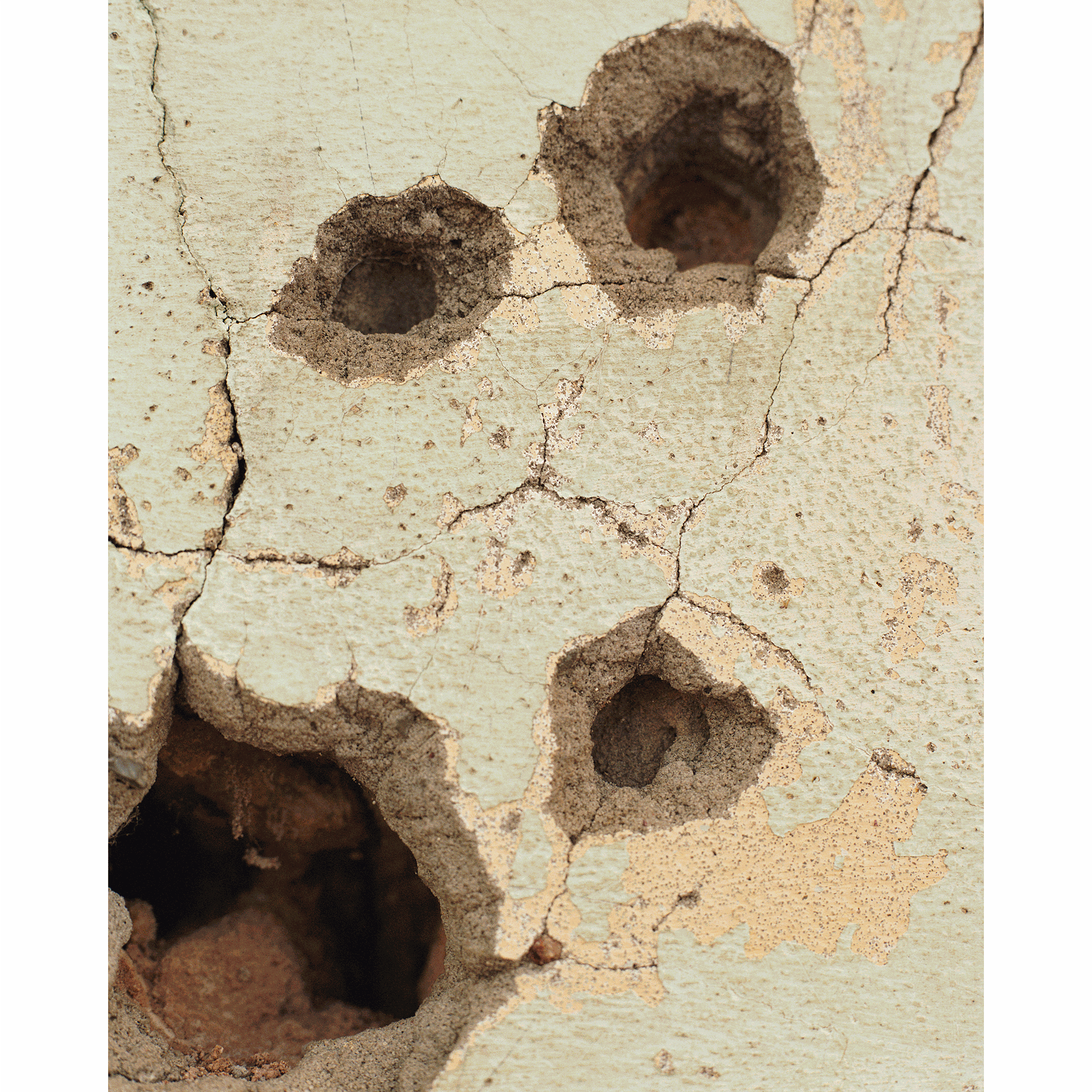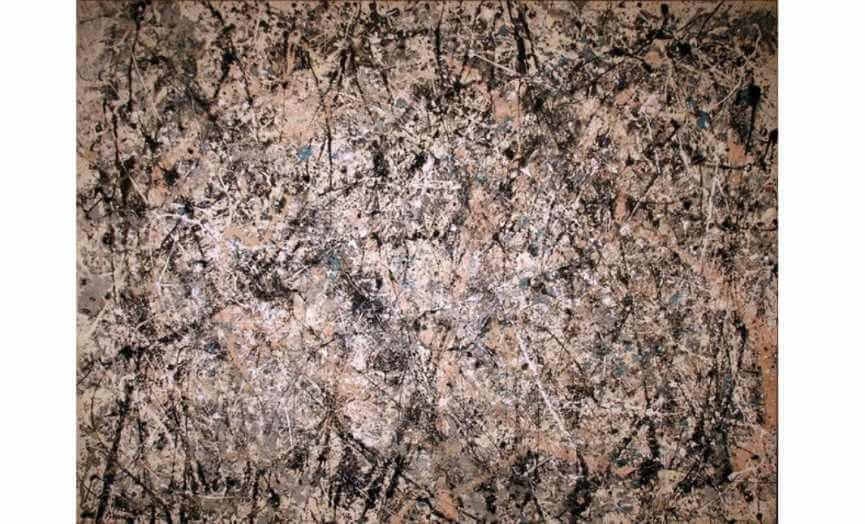Carlos Garaicoa, is a Cuban-born international artist. Garaicoa’s work uses imagery of the built environment to explore systems that influence the world around us - politics, war, time. As commented by Orlando Hernandez, our collection curator - by using the city as a medium Garaicoa taps into a shared human language allowing for common understanding. He uses images that speak immediately to our emotions: unkempt weeds creeping from the floor, missing ceilings, bullet-holes-at-human-height, decay. There is a wabi sabi style aesthetic pleasure in the visuals of the decay. This is, however, offset by the complex philosophy behind the works.

ABSTRACCIONES: AZUL (ABSTRACTIONS: BLUE), 1997-2000
COLOUR PHOTOGRAPH
124 X 100 CM
48 7/8 X 39 3/8 IN
EDITION 3 OF 3 AND 3 A/P
SERIES: ABSTRACCIONES
In his ABSTRACTIONS series (1997 – 2000), Garaicoa links his photographs taken in Cuito Cuanavale, Angola, to the Abstract art movement that reached its peak in the late 50s in the West. This link is created through the title, and through the patterns his photographs depict, reminiscient in their own way to Rothkos, Pollocks, or de Koonings.

JACKSON POLLOCK - NUMBER 1 (LAVENDER MIST), 1950. OIL, ENAMEL, AND ALUMINUM ON CANVAS. AILSA MELLON BRUCE FUND. 1976.37.1. © 2019 POLLOCK-KRASNER FOUNDATION / ARTISTS RIGHTS SOCIETY (ARS), NEW YORK
Cuito Cuanavale was the location of the last battle fought in the Angolan Civil War in 1987. And so we must ask what this region has to do with Absract Expressionism?
Abstract Expressionism has a been decisively documented as a tool of propaganda by USA during the Cold War. It promoted the USA’s projected ideals of freedom as opposed to perceived Soviet oppression. The art movement also allowed the CIA plausible reasons for travel across the world through traveling exhibitions. This was a small campaign in a greater war of proxy battles fought between the USA and USSR during the Cold War, both physical and cultural. See here for a fantastic exporation of the topic by Lucie Levine.
A major example of physical conflict was the proxy battle fought in Angola which culminated in what is commonly known as the Angolan Civil War and/or South African Border War. The final battle of this was fought in Cuito Cuanavale in March 1988. The battle was fought by two groupd of aligned forces. On one side, aligned with the interests the USSSR, was People's Armed Forces for the Liberation of Angola (FAPLA), Cuban advisors and soldiers, Vietnam, the ANC and SWAPO. On the other side, aligned with the USA, were South Africa and soldiers of the National Union for the Total Independence of Angola (UNITA). The conflict was bloody and its effects can still be felt in Angola today.
The Garaicoa’s seres documents the bullet-holes, the decay, and the fallout evident in the Angolan architecture from this final campaign. His series documents the marks left from this campaign on Cuito Cuanavale. As an artwork, these marks are like strokes of paint on a canvas. There are the marks left by the hand of the creator.

ABSTRACCIONES, HUECOS OXIDADOS (ABSTRACTIONS, RUSTED HOLES), 1997-2000
COLOUR PHOTOGRAPH
124 X 100 CM
48 7/8 X 39 3/8 IN
EDITION 1/3
SERIES: ABSTRACCIONES
By linking his series to the Abstract Expressionism movement of the 40 and 50s, we are invited to view his images in the context of art and imagery.
And so, the crumbling rocks and bullet-holes and chipped paint become compositional elements, shapes to make a visual arrangement - the paint on a canvas. In this, the viewer is detached from the violence of the battle and of the subsequent decay. The real-world implications are replaced with aesthetic ones. The landmarks are taken out of their context, removed from their history… but the thing is, their history happened. Despite the arrangement, the violence still happened. It cannot be undone. Garaicoa thus obliges the viewer to think through history and architecture and indeed the beauty of decay all using site-photography.
To explore this further, please see our publications essay and DOWNLOAD our catlague essay from our collection curator, Orlando Hernández.
Or, explore our ARTIST section to see all news and works by CARLOS GARAICOA.




